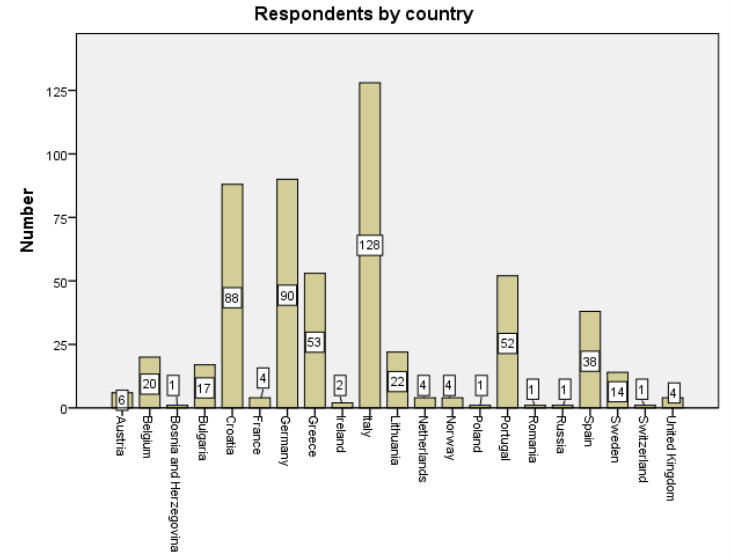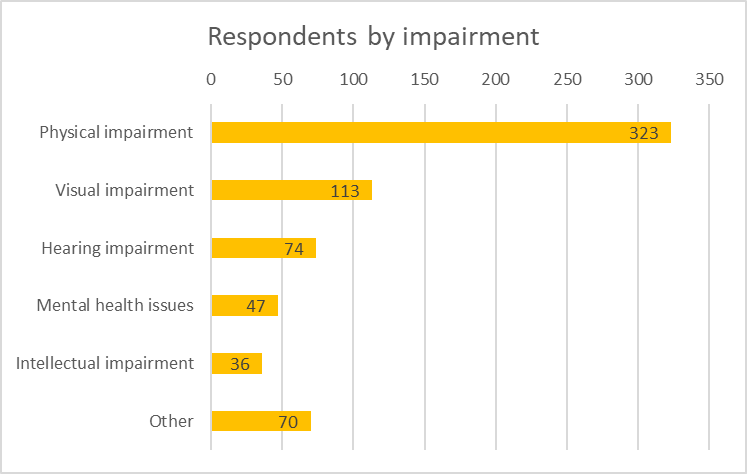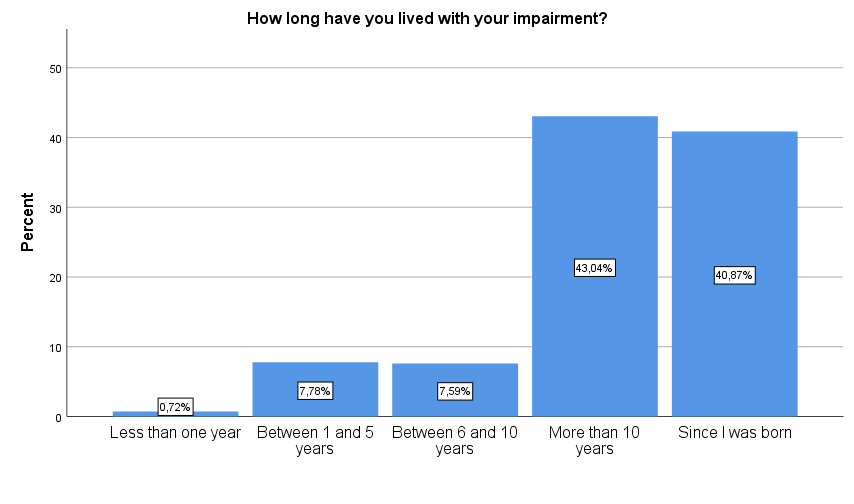Table of contents:
A. Participants
The final sample comprised 553 individuals. The majority of respondents filled in the surveys by themselves as persons with disabilities (87.7%). However, in 68 cases (12.3%) responses were given by other persons answering on behalf of the person with disability. Persons answering on behalf of a person with disability represented primarily respondents with intellectual disabilities (58%, n= 21), implicating that the majority of persons with intellectual disabilities did not participate on their own.
As shown in Figure 1, respondents from 21 countries are represented in the sample. However, the number of the study participants varies greatly between the countries. The countries with the highest numbers of study participants are Italy (n= 128), Germany (n= 90), and Croatia (n= 88). In contrast, only one person participated per each of Bosnia and Herzegovina, Poland, Romania, Russia, and Switzerland.
Figure 1. Number of respondents per country

Gender was nearly equally distributed in the sample with slightly more men (51.4%) than women (45.8%). The gender distribution, however, varied as per the forms of disability. The share of male respondents was higher for the group of respondents with visual impairment (58.4%), yet lower for mental health issues (38.3%) and intellectual disabilities (44.4%). The age range of respondents was between 16 and 99, with the mean age amounting to 46.41 years (SD= 15.7 years).
Figure 2 shows the distribution of respondents for each type of disability. Before conducting the survey, we contacted six different European organizations working with persons with different types of disabilities to ask which terms these persons preferred to be used when referring to their disabilities. We used these terms throughout all of the TRIPS project, including this research (Alčiauskaitė, Sioen, Barbosa, Dreßler & König, 2020).
The majority of respondents were with physical disabilities (n= 323, 58.4%), 113 persons (17%) were with visual impairments, and slightly fewer respondents (n= 74, 11.6%) had hearing impairments. The minority of respondents were with intellectual disabilities (n= 36, 6.5%), or had mental health issues (n= 47, 8.5%).
Figure 2. Number of respondents per type of disability

With regard to the time participants have lived with their disabilities, the analysis revealed that the majority of respondents were either born with their disability (40.9%), or had been living with a disability for more than 10 years (43.0%), (figure 3).
Figure 3. Duration of how long a respondent has had a disability
